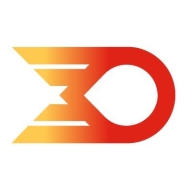

Splunk Observability Cloud and Lumigo both compete in the cloud infrastructure monitoring market. Splunk Observability Cloud seems to have an advantage in terms of features and potential ROI while Lumigo is noted for its ease of deployment and customer service.
Features: Splunk Observability Cloud provides advanced analytics, comprehensive alerting systems, and versatile data visualization tools. It caters to larger enterprises with an extensive feature set. Lumigo focuses on intuitive real-time troubleshooting, efficient serverless architecture monitoring, and is optimized for specialized serverless solutions.
Ease of Deployment and Customer Service: Splunk Observability Cloud's deployment is noted for robust integration capabilities, though it can be complex. Lumigo offers a seamless and straightforward deployment process. Lumigo's customer service is often praised, contrasting with Splunk’s detailed integration requirements.
Pricing and ROI: Splunk Observability Cloud involves a higher initial setup cost, aiming for long-term ROI through extensive analytics and high-level functionalities. Lumigo offers a lower entry cost with quicker ROI, focusing on serverless environments. Splunk targets enterprise-scale returns, whereas Lumigo appeals to those prioritizing immediate cost savings and efficiency in serverless adoption.
| Product | Market Share (%) |
|---|---|
| Splunk Observability Cloud | 1.9% |
| Lumigo | 0.2% |
| Other | 97.9% |

| Company Size | Count |
|---|---|
| Small Business | 19 |
| Midsize Enterprise | 10 |
| Large Enterprise | 44 |
Lumigo offers comprehensive monitoring and troubleshooting capabilities for serverless applications, particularly in AWS Lambda environments. It provides real-time insights and detailed logs to help users identify performance bottlenecks and optimize application performance.
Lumigo is designed to trace issues within AWS Lambda environments, providing users with real-time insights and detailed logs. Its visualization features assist in understanding application flows and dependencies, facilitating quicker problem resolution. The platform's ease of integration with existing frameworks and robust support for debugging issues are additional advantages. Users can effectively pinpoint issues and reduce downtime due to the efficiency of Lumigo’s real-time monitoring and detailed error tracking.
What are the key features?Companies across various industries implement Lumigo to enhance their serverless application performance. It is used extensively in finance, healthcare, and technology sectors to monitor AWS Lambda environments, providing real-time monitoring, error tracking, and application visualization to ensure optimal performance and quick issue resolution.
Splunk Observability Cloud offers sophisticated log searching, data integration, and customizable dashboards. With rapid deployment and ease of use, this cloud service enhances monitoring capabilities across IT infrastructures for comprehensive end-to-end visibility.
Focused on enhancing performance management and security, Splunk Observability Cloud supports environments through its data visualization and analysis tools. Users appreciate its robust application performance monitoring and troubleshooting insights. However, improvements in integrations, interface customization, scalability, and automation are needed. Users find value in its capabilities for infrastructure and network monitoring, as well as log analytics, albeit cost considerations and better documentation are desired. Enhancements in real-time monitoring and network protection are also noted as areas for development.
What are the key features?In industries, Splunk Observability Cloud is implemented for security management by analyzing logs from detection systems, offering real-time alerts and troubleshooting for cloud-native applications. It is leveraged for machine data analysis, improving infrastructure visibility and supporting network and application performance management efforts.
We monitor all Application Performance Monitoring (APM) and Observability reviews to prevent fraudulent reviews and keep review quality high. We do not post reviews by company employees or direct competitors. We validate each review for authenticity via cross-reference with LinkedIn, and personal follow-up with the reviewer when necessary.